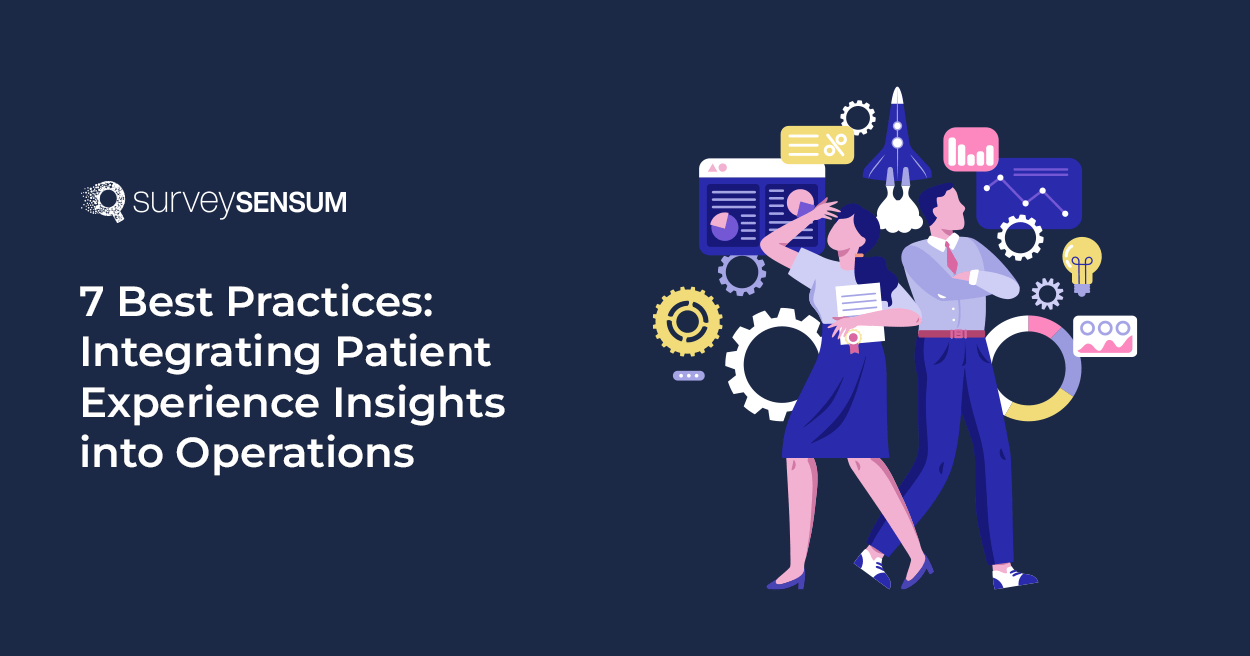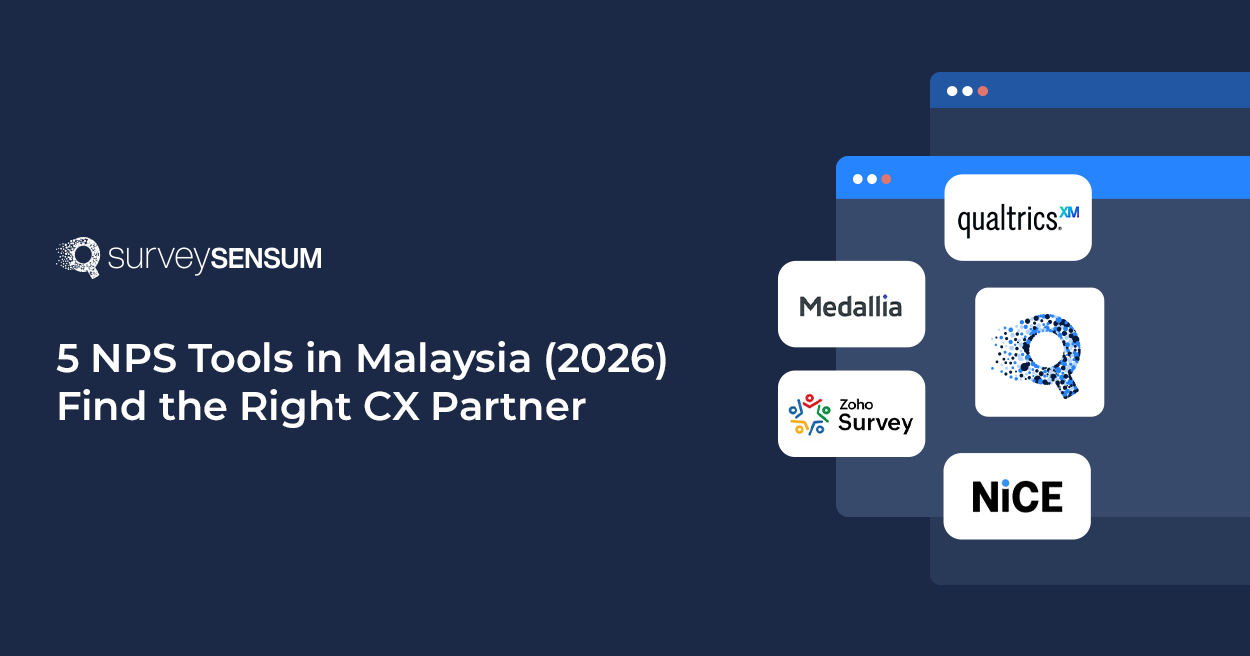

What makes a patient feel truly cared for?
Is it shorter wait times, clearer communication, or compassionate staff?
In today’s healthcare landscape, patient experience is more than a buzzword – it’s a critical factor in building trust, improving outcomes, and fostering loyalty. But how can healthcare providers deliver experiences that not only meet expectations but exceed them?
So let’s explore the key patient experience best practices that can transform patient care from routine to remarkable.
What is Patient Experience?
Patient experience refers to a patient’s overall perception of their interactions with a healthcare provider, hospital, or medical system throughout their care journey. It encompasses everything from appointment scheduling and wait times to doctor communication, treatment effectiveness, and post-care follow-ups.
A positive patient experience means that individuals feel heard, respected, and well-informed about their health. It goes beyond just medical treatment – it includes the quality of care, the environment, and how healthcare professionals engage with patients.
But does it really matter? Let’s find out.
Why Does Patient Experience Matter?
1. Improves Health Outcomes
When patients feel heard, respected, and well cared for, they are more likely to trust you as their healthcare provider and adhere to treatment plans. Studies show that hospitals receiving “excellent” patient experience ratings have lower readmission and mortality rates compared to hospitals receiving “low” experience ratings. This is because satisfied patients are more likely to follow post-treatment instructions, take prescribed medications, and attend follow-up appointments, leading to better recovery and fewer complications.
2. Boosts Patient Loyalty
According to research, 69% of patients would switch providers for better services. So yes, patient loyalty is crucial. Patients value clear, compassionate communication, timely responses, and personalized care. When these needs are met, they are more likely to stay with a provider long-term and recommend the service to others.
3. Enhances Patient Engagement
Patients who feel involved and supported in their healthcare journey are more proactive about managing their health. Satisfied patients are more likely to ask questions, follow preventive care guidelines, and make healthier lifestyle choices. This not only improves individual health outcomes but also reduces the burden on healthcare systems by preventing avoidable hospital visits and complications.
4. Reduces Negative Reviews and Strengthens Reputation
In the digital age, online reviews and ratings significantly influence a healthcare provider’s reputation. A positive patient experience leads to higher satisfaction scores and glowing reviews, which attract new patients and build trust within the community. On the other hand, negative experiences can quickly damage a provider’s reputation and deter potential patients. By prioritizing patient experience, healthcare organizations can build a strong, positive reputation that sets them apart from competitors.
Now, creating the experience your patient is looking for can be a challenging endeavor if you don’t know the right way to approach it. So, let’s discuss the 7 tried and tested best practices to boost patient experience.
7 Best Practices for Exceptional Patient Experience
Creating a positive patient experience is essential for building trust, improving health outcomes, and fostering long-term loyalty. Here are seven best practices that healthcare providers can implement to deliver exceptional care:
1. Embrace Data-Centric Approaches
A data-centric approach in healthcare means using patient data, analytics, and AI-driven insights to enhance decision-making, personalize treatments, and improve overall patient care.
This helps in:
- Personalized Care: By analyzing past medical records and patient history, doctors can tailor treatments to individual needs.
- Reduced Wait Times: AI-powered scheduling can optimize appointment slots, reducing patient wait times.
- Faster Diagnosis and Treatment: Predictive analytics help detect diseases earlier, leading to better health outcomes.
- Improved Communication: Real-time patient data allows seamless coordination between different healthcare providers.
2. Resolve Patient Issues in Real-Time to Boost Patient Satisfaction
Real-time monitoring and response in healthcare refers to the ability to track patient health, experiences, and feedback instantly and take immediate action when necessary. Instead of relying on delayed reports or post-discharge feedback, hospitals and clinics can now use real-time alerts to detect issues as they happen and resolve them proactively.
This helps in
- Improved Care Quality: Continuous monitoring ensures early detection of health complications.
- Higher Patient Satisfaction: Addressing feedback instantly creates a more responsive healthcare experience.
- Reduced Readmission Rates: Identifying problems early prevents complications and unnecessary hospital visits.
- Seamless Communication: Instant alerts allow staff to prioritize urgent patient needs.

With SurveySensum’s real-time ticketing system, no feedback will be left behind, ensuring a closed-loop feedback mechanism. The system flags any negative feedback, assigns/escalates the ticket to the right team for proactive action, and also tracks the progress to keep the management updated!
3. Cultivate a Patient-Centric Culture
A patient-centric culture means putting patients at the heart of every decision, ensuring that their needs, preferences, and experiences shape healthcare services. Instead of focusing solely on treatments and procedures, healthcare providers prioritize empathy, clear communication, and personalized care.
This leads to
- Better Health Outcomes: Engaged patients who understand their care plans are more likely to follow treatments and attend follow-ups.
- Reduced Complaints and Litigation: Transparent and empathetic communication lowers frustration and dissatisfaction.
- Increased Operational Efficiency: Addressing patient concerns proactively improves workflow and resource allocation.
SurveySensum can help you gather, analyze, and act on patient feedback in real-time to enhance the overall patient experience by,
- Collecting and processing patient feedback from multiple touchpoints – hospital visits, telemedicine, mobile apps, and websites – to uncover key experience gaps. No missed insights anymore!
- Leveraging AI-powered text analytics software to analyze patient comments and detect real-time frustration points, delays, or dissatisfaction.
- Providing customized reports and dashboards to take immediate action.
- Addressing patient concerns proactively improves satisfaction and trust.
- Identifying patterns in patient experience data to anticipate potential service failures and enhance care quality before issues arise.
4. Translate Patient Insights into Actionable Plans
Collecting patient feedback is just the first step. The real impact comes when hospitals and healthcare providers act on those insights to enhance the patient experience. Translating insights into actionable plans means identifying patterns, prioritizing improvements, and implementing targeted solutions based on real patient data.

With SurveySensum’s AI Text Analytics Software, you can quickly identify top customer issues from thousands of pieces of feedback in just a few minutes. For example, if patients consistently mention long wait times, you can take targeted actions like optimizing scheduling, increasing staff efficiency, or introducing self-check-in kiosks to reduce delays.
This leads to
- Reduces Patient Frustration: Addressing key pain points leads to a smoother, more efficient experience.
- Boosts Patient Trust and Loyalty: Patients feel valued when they see real changes based on their feedback.
- Improves Health Outcomes: Streamlining processes ensures faster treatments, fewer errors, and better care coordination.
- Enhances Staff Efficiency: Healthcare professionals can focus on care rather than administrative bottlenecks.
5. Promote Transparency and Communication To Support Patient-Centric Culture
Transparency and communication are the cornerstones of a trustworthy and patient-centric healthcare system. Patients expect clear, honest, and timely information about their health conditions, treatments, billing, and hospital policies. When healthcare providers proactively communicate and ensure transparency, they build trust, reduce anxiety, and enhance patient satisfaction.
However, achieving transparency is not just about providing information – it’s about active listening, addressing concerns, and creating a closed feedback loop. This is where SurveySensum’s AI-driven feedback system plays a crucial role by helping healthcare providers identify and resolve patient concerns in real-time.
Telehealth is the future – don’t just keep up, lead the way. Gather patient feedback after every consultation, identify areas for improvement instantly, and personalize care based on real-time insights. Better experiences start with better data – act on it!
6. Pursue Continuous Improvement with Real-Time Feedback
Continuous improvement in healthcare means constantly refining patient experience, service delivery, and internal processes based on real-time insights and feedback. It’s about identifying gaps, acting on patient concerns, and implementing changes that enhance care quality over time.
This isn’t a one-time initiative; it’s a data-driven, iterative process where healthcare providers collect feedback, analyze trends, and implement solutions.
However, improving patient experience also comes with some challenges, so let’s talk about some challenges and how to address them.
Addressing Challenges: Unveiling Effective Solutions
3 Common challenges that people face while delivering an excellent patient experience.
1. Addressing Resistance to Change
Resistance to change slows healthcare progress – studies show that up to 70% of change initiatives fail due to employee resistance and lack of support. To overcome this, educate stakeholders on the proven benefits of patient-centered care. Share real-world success stories that demonstrate measurable outcomes, align change initiatives with the shared goal of improving patient care, and highlight a clear ROI to gain faster buy-in and drive adoption.
How to Overcome It: Host monthly workshops and share case studies that showcase how patient-centered care improves both clinical and operational results.
2. Managing Data Security and Privacy
In healthcare, breaches cost an average of $11 million per incident. To protect sensitive patient information, healthcare institutions must comply with HIPAA and GDPR regulations. Implement robust encryption, strict access controls, and secure communication protocols to safeguard data. Prioritizing security not only reduces breach risks but also builds patient trust.
How to Overcome It: Conduct quarterly security audits and staff training sessions to ensure data protection policies are consistently enforced and updated.
3. Optimizing Resource Allocation
To optimize resource allocation, prioritize initiatives that have the greatest impact on patient satisfaction and clinical outcomes. Use data analytics to identify high-impact areas and strategically direct resources toward them, improving operational efficiency and enhancing care delivery without stretching budgets thin.
How to Overcome It: Set up a cross-functional task force to analyze patient feedback monthly, identify the top three patient pain points, and allocate resources toward initiatives that directly address them.
Let’s also focus on the future trends.
The Future of Patient Experience in Healthcare: Key Trends to Watch
The healthcare industry is undergoing a major transformation, with technology and patient-centered care at its core. With 81% of patients saying a positive customer experience is just as important as the quality of care they receive, the pressure is on providers to offer seamless, efficient, and personalized healthcare services.
So, what’s next? Here are three key trends reshaping patient experience in healthcare.
1. AI and Predictive Analytics in Patient Engagement
AI is no longer a futuristic concept in healthcare – it’s here, revolutionizing patient interactions and making healthcare more efficient.
- 80% of healthcare executives say AI is helping improve workflow automation and decision-making.
- Predictive analytics identifies at-risk patients by analyzing health data, enabling early interventions and personalized treatment plans.
- AI-powered diagnostics can analyze medical images 30 times faster than human doctors, with 99% accuracy in some cases.
With AI-driven engagement, healthcare providers can proactively address patient concerns, leading to better health outcomes and stronger patient-provider relationships.
2. The Role of Telemedicine in Enhancing Patient Experience
The pandemic fueled the rise of telemedicine, and its adoption has surged 38x, making virtual healthcare the new normal. Patients today expect convenience and accessibility, and telehealth is meeting those expectations.
- 76% of patients now prefer virtual consultations for non-emergency medical concerns.
- Remote monitoring tools (such as wearable devices) allow real-time tracking of chronic conditions like diabetes and heart disease.
- Hybrid healthcare models, combining in-person visits with virtual care, ensure seamless continuity of treatment.
With telemedicine here to stay, healthcare providers must invest in digital infrastructure to ensure secure, high-quality virtual care experiences.
3. The Shift Toward Value-Based Healthcare Models
Gone are the days when healthcare was just about treating illnesses. The industry is moving toward value-based care, where the focus is on long-term patient health and outcomes rather than the number of procedures performed.
- Providers are leveraging digital health records to create integrated care models that personalize treatment plans.
- Value-based care emphasizes preventive healthcare, leading to a 20% reduction in hospital readmissions.
- Reimbursement models are shifting – hospitals are rewarded for patient satisfaction and successful recovery rates rather than the volume of services delivered.
By focusing on quality over quantity, value-based healthcare not only improves patient outcomes but also makes healthcare more cost-effective for both providers and patients.
Conclusion
In today’s fast-evolving healthcare landscape, patient satisfaction isn’t just a goal—it’s the key to success. But improving patient experience isn’t about just collecting data; it’s about using insights to drive real change.
That’s where SurveySensum comes in. With real-time feedback, AI-powered analytics, and patient-first innovation, healthcare providers can identify pain points, enhance care delivery, and build lasting trust. The future of healthcare isn’t just about better treatment—it’s about making patients feel heard, valued, and truly cared for.
Bridge the Gap Between Patient Expectations & Care Delivery with SurveySensum
Frequently Asked Questions on Patient Experience
Patient experience directly impacts health outcomes, patient loyalty, and the overall reputation of healthcare institutions. A positive patient experience is linked to higher patient satisfaction, better treatment adherence, fewer readmissions, and lower malpractice risk. When patients feel heard, respected, and cared for, they are more likely to trust their providers, follow medical advice, and return for future care.
Patient experience can be measured through various methods, such as:
- NPS: Asking patients how likely they are to recommend the healthcare service to others.
- Patient Satisfaction Scores: Using rating scales for aspects like communication, responsiveness, and facility cleanliness.
- Online Reviews and Social Listening: Monitoring patient feedback on review sites and social media platforms.
- Text Analytics: Analyzing open-ended feedback to identify common themes, sentiments, and areas for improvement.
Patient experience plays a crucial role in:
- Enhancing Quality of Care: Patients who have a positive experience are more engaged, which improves clinical outcomes.
- Building Patient Loyalty: Good experiences encourage patients to return and recommend the facility to others.
- Boosting Operational Efficiency: Feedback can highlight inefficiencies, enabling hospitals to streamline processes.
- Financial Performance: Hospitals with better patient experiences often see higher revenue growth and better reimbursement rates tied to value-based care models.
The 4 P’s of patient care are designed to proactively improve the patient experience during healthcare delivery:
- Pain: Regularly assess and manage the patient’s pain to ensure comfort.
- Positioning: Help patients change positions regularly to prevent discomfort and bedsores.
- Personal Needs: Assist with basic needs like toileting, hydration, and mobility to enhance dignity and comfort.
- Placement: Ensure essential items (call button, water, phone) are within easy reach to promote patient independence and safety.















